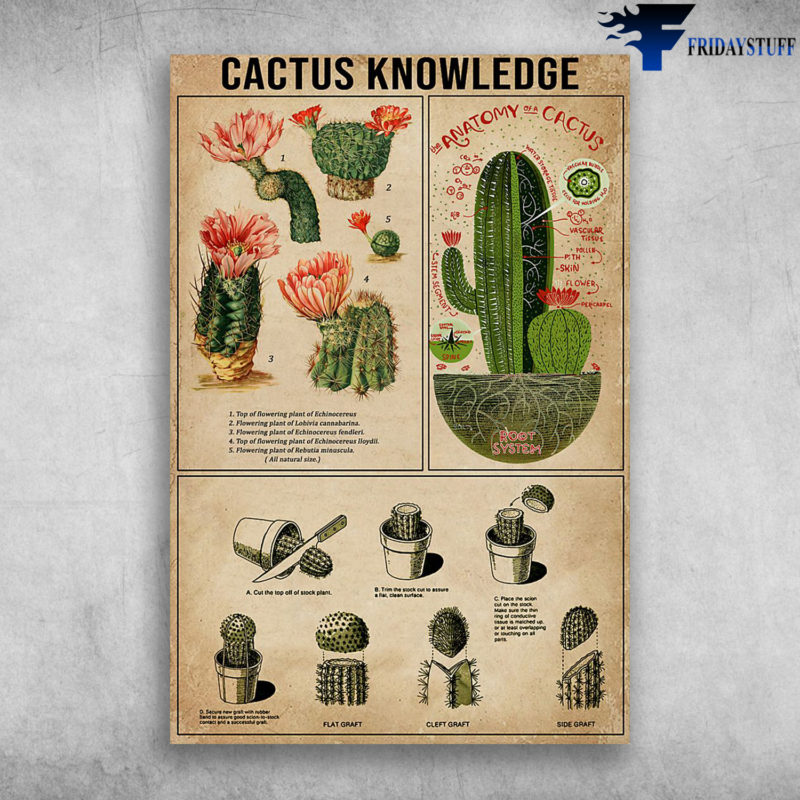When most people think of deserts, they often envision arid landscapes populated by a myriad of hardy plants, with cacti emerging as the champions of survival in an unforgiving environment. Yet, many overlook the intricate features and fascinating anatomy that set cacti apart from the vast array of flora on Earth. This article transforms the dry perception of cacti into a vibrant exploration, revealing the astonishing adaptations and unique characteristics that allow these plants to thrive in extreme conditions.
Understanding cacti requires delving into their biology and ecology. Not only do these succulents possess physical traits that enable them to conserve water and withstand high temperatures, but they also exhibit remarkable reproductive strategies and symbiotic relationships with various organisms. The world of cacti is a microcosm of resilience and ingenuity, and uncovering it can instigate a profound appreciation for these extraordinary plants.
Magnificent Morphology: The Structure of Cactus Plants
One of the most striking features of cacti is their distinctive morphology, which diverges significantly from the conventional appearances of traditional flora. The first fundamental aspect to consider is the stem, which is typically fleshy and cylindrical or globular in shape. The stem serves as both a site for photosynthesis and a reservoir for water storage. In the absence of leaves, cacti have evolved to perform this critical function efficiently through specialized tissues in their stems.
The epidermis, a waxy outer layer, plays a pivotal role in minimizing water loss. This cuticle acts as a protective shield against environmental stressors, retaining moisture while simultaneously deflecting harsh sunlight. Below the epidermis lies the chlorenchyma, a layer rich in chlorophyll, allowing the plant to convert sunlight into energy. This morphological trait exemplifies the ingenious adaptation of cacti to their native habitats, where water scarcity often defines survival.
Moreover, cacti are renowned for their spines—modified leaves that serve multiple purposes. While they may seem like mere defensive structures designed to deter herbivores, spines offer additional benefits, including shading and reducing airflow around the plant. This physical barrier creates microclimates that cushion plants from extreme temperature fluctuations, enhancing their survival chances in relentless desert climates.
Intriguing Internal Anatomy: The Secret Life Within
Beneath the surface of a cactus, a complex arrangement of tissues works in concert to sustain life. The vascular system, comprising xylem and phloem, is essential for nutrient and water transport. Cacti utilize a unique adaptation known as Crassulacean Acid Metabolism (CAM) to maximize water efficiency. Unlike conventional plants that open their stomata during the day, cacti open theirs at night to absorb carbon dioxide, converting it into malic acid for later use in photosynthesis. This innovative mechanism not only conserves water but also allows cacti to thrive in an environment with limited moisture availability.
The storage organs within a cactus, particularly parenchyma cells, play a crucial role in hydration. These cells can swell and contract based on water availability, ensuring that the plant remains hydrated during arid periods. Furthermore, certain species exhibit the ability to shrink in size during prolonged droughts, a remarkable testimony to their adaptive capabilities. This extraordinary physiological versatility not only captivates but also prompts deeper contemplation about nature’s inherent ingenuity.
Ecological Relationships: Cacti and Their Companions
The anatomical wonders of cacti extend beyond their physical attributes; their interactions within ecosystems are equally compelling. Cacti often act as pivotal players in their environments, supporting a host of organisms that rely on them for sustenance and shelter. The mutualistic relationships between cacti and pollinators present a fascinating study in ecological harmony. Many cacti species specifically attract bees, bats, and hummingbirds, which help facilitate their reproductive processes through cross-pollination.
Moreover, certain reptiles and birds utilize the spines of cacti as nesting sites, benefiting from the protection they afford against predators. In turn, the droppings of these animals can enrich the soil with nutrients, fostering a healthy microhabitat around the cactus. This intricate web of life underscores the importance of cacti as not merely solitary organisms but as integral components of their ecosystems.
Challenges and Conservation: The Future of Cacti
Despite their remarkable adaptations, cacti are not immune to the threats posed by human activity and climate change. Urbanization, habitat destruction, and illegal harvesting for ornamental purposes have led to declines in various species. As stewards of the environment, it becomes paramount to recognize the significance of cacti within their ecosystems and advocate for their conservation. Efforts to restore and protect cactus habitats can yield profound benefits, not only for the plants themselves but for the entire desert ecosystem reliant on their existence.
As we delve deeper into the world of cacti, we discover an intricate tapestry woven by evolution’s hand. By gaining insight into the unique features, internal anatomy, ecological relationships, and conservation challenges of these iconic plants, we can foster a newfound respect and curiosity for their existence. Cacti, once perceived simply as spiny curiosities, reveal their true nature as complex, adaptive organisms that exemplify the resilience of life on Earth.





Leave a Comment